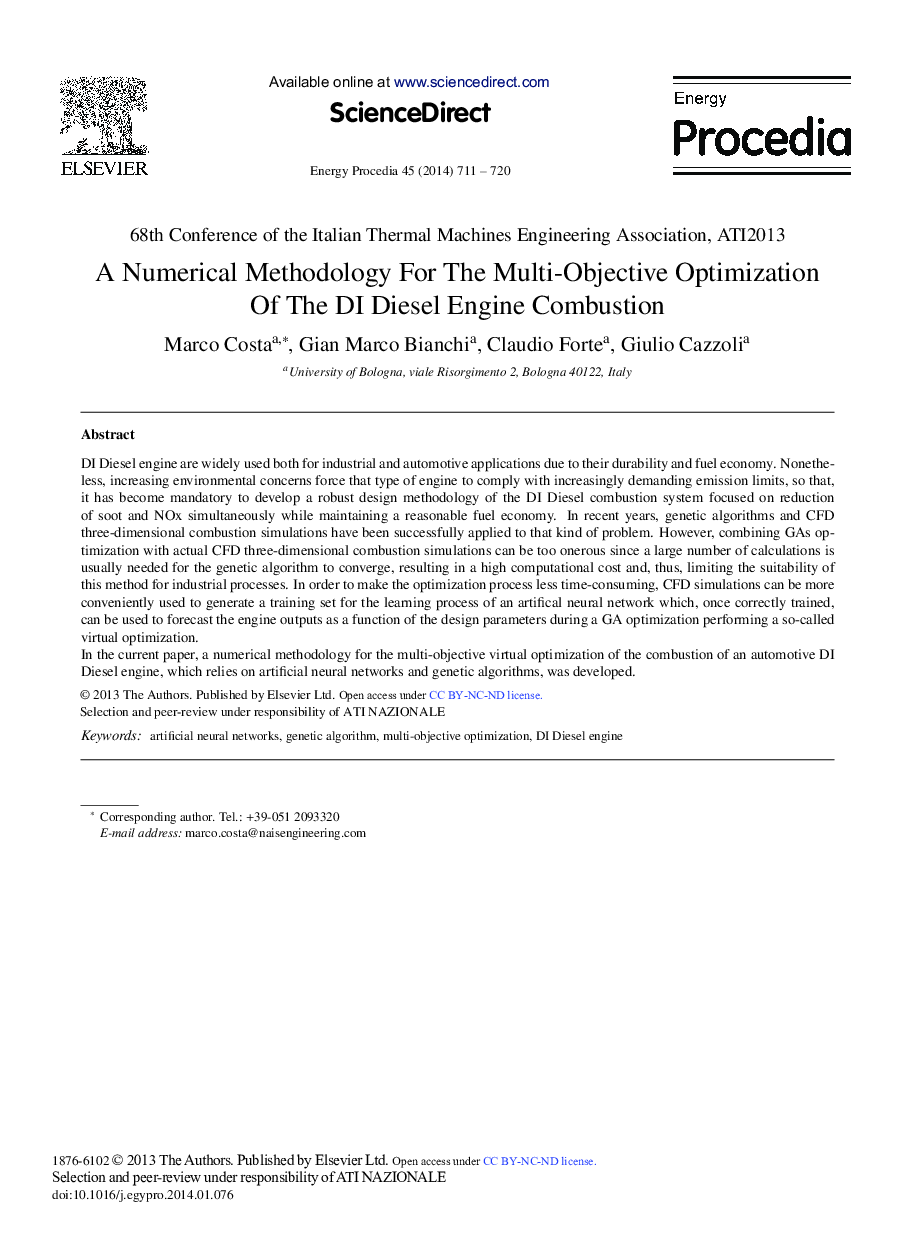| Article ID | Journal | Published Year | Pages | File Type |
|---|---|---|---|---|
| 1512040 | Energy Procedia | 2014 | 10 Pages |
DI Diesel engine are widely used both for industrial and automotive applications due to their durability and fuel economy. Nonethe- less, increasing environmental concerns force that type of engine to comply with increasingly demanding emission limits, so that, it has become mandatory to develop a robust design methodology of the DI Diesel combustion system focused on reduction of soot and NOx simultaneously while maintaining a reasonable fuel economy. In recent years, genetic algorithms and CFD three-dimensional combustion simulations have been successfully applied to that kind of problem. However, combining GAs op- timization with actual CFD three-dimensional combustion simulations can be too onerous since a large number of calculations is usually needed for the genetic algorithm to converge, resulting in a high computational cost and, thus, limiting the suitability of this method for industrial processes. In order to make the optimization process less time-consuming, CFD simulations can be more conveniently used to generate a training set for the learning process of an artifical neural network which, once correctly trained, can be used to forecast the engine outputs as a function of the design parameters during a GA optimization performing a so-called virtual optimization.In the current paper, a numerical methodology for the multi-objective virtual optimization of the combustion of an automotive DI Diesel engine, which relies on artificial neural networks and genetic algorithms, was developed.
